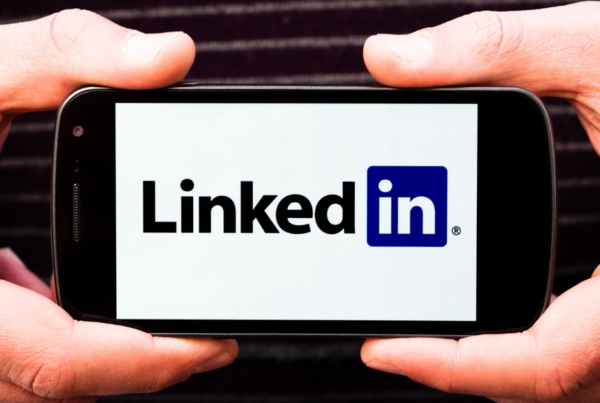When Heather Lose, Editor-in-Chief for The Tennessee Conservationist magazine, is asked how she would respond to naysayers who wonder why her organization would have a print magazine, she laughs. “The naysayers may not know what we know, which is that print simply is not dead,” Lose says. “People enjoy moving away from their screens to enjoy publications like ours.”
Costco Connection International Editor Stephanie Ponder says that the print magazine of the retail chain adds perceived value to a Costco membership, and she’s constantly surprised to see letters from readers about a story or recipe they tore out to save. Whether it’s a monthly publication that serves a massive retailer such as Costco or a specialized publication from Tennessee State Parks, it’s clear that a print magazine can serve readers—who are often members and brand loyalists—in ways other marketing materials, including digital magazines, cannot. At The Tennessee Conservationist, the proof is in the subscriber breakdown.
“The lion’s share of subscribers since January of 2021 (63 percent) bought print-only subscriptions,” says Lose, who wears two hats as Editor-in-Chief of the magazine and Art Director for Tennessee State Parks. “Digital-only subscriptions only amounted to 3 percent, while print and digital came in at 33 percent.”
With 7,000 subscribers, The Tennessee Conservationist will celebrate its 85th birthday in 2022. The magazine was adopted by Tennessee State Parks in 2018, which is when Lose was hired and the magazine was “pulled apart and put back together for today’s readers.” Most subscribers are environmentalists and long-time subscribers, but Lose says the magazine is seeing growth among millennials who are “seeking out authentic experiences” and gravitate to content that points to natural places to visit and cool things to see. The magazine also gets mailed to schools and libraries, and copies are distributed to every lodge room and cabin in all 56 Tennessee state parks.
With just three editorial staff members (including Lose) working full-time on planning, acquiring content for, editing, and designing the magazine, the team relies on articles and photos contributed by volunteers, many of whom are park professionals, teachers, authors, and other experts in conservation, history, and sustainability topics. The full-time staff consists of an editor, an art director, and a circulation manager who also works as a special projects manager for Tennessee State Parks. They use MagHub for their circulation management and BlueToad for the digital magazine. While working from home, they rely on platforms such as Adobe, Teams, Basecamp, and email to communicate.
“The gorgeous photos we’re so privileged to run come from a few Tennessee nature photographers who love the magazine and our mission and also from other contributors,” Lose says. “Tennessee State Parks has a few park rangers with excellent photo skills, and they are boots on the ground, which allows them to capture moments no one else really gets to see. We also get many story pitches from colleagues and nonprofit and environmental agencies such as TennGreen, and we love spreading the good news about conservation successes.”
At Costco Connection, the structure is understandably different for a magazine that gets distributed to a much broader audience—14 million people in the United States, two million in the United Kingdom, and five million in Canada. After 21 years at the magazine, the last two as International Editor, Ponder knows the brand and the audience extremely well. She even spent two years as the editor of the Costco cookbook, was a reporter (then editor) for the UK edition, then moved to the Canadian magazine, and then transferred to the US edition. Now she oversees both the UK and Canadian magazines, which produce nine issues each per year.
Launched in 1990 in a tabloid format, the goal of Costco Connection has always been to educate members about Costco products, programs, suppliers, and members. Today, there are also international editions. The US, Canadian, and UK editions are led by staff in Costco’s headquarters in Issaquah, Washington, who receive help from colleagues in Ottawa, Canada, and Watford, England.
“We work with colleagues in the other countries to share stories,” Ponder says. “As a global company, a piece that works in the US could work in many, if not all, of the international editions.”
There are four prongs to the Costco Connection team: editorial, graphic design, advertising, and production. The editorial team consists of two editors and four in-house writers, plus the editorial director. Each has a beat to report on so that the staff can form relationships with buyers, which helps create better, more relevant content for members. The editorial team is, for the most part, the only team that relies regularly on freelancers.
“There’s no way we could find the time to write all of the content for the three versions we create in our office,” Ponder says. “Plus, using freelancers from Canada and the UK lends a sense of authenticity to the publications. And subject-matter experts create a sense of authority in small-business, food, and health stories.”
To develop story ideas for each issue, the editorial staff gathers ideas from Costco’s buying teams and reviews pitches from freelancers and in-house writers. They also look at seasonal merchandising initiatives and promotions to help frame the content.
“Maybe it sounds funny to use the phrase content marketing, but I believe that’s what the Connection does,” Ponder says. “Every article needs to have a ‘connection’ to Costco, but that doesn’t mean we can’t educate members along the way. It’s important to us to be honest and informative, and we do our best to avoid a heavy-handed sales pitch or use too much ‘buyer speak.’”
Searching for Stories the Costco Connection Way — Stephanie Ponder
One of the challenges faced by brand magazines is finding new stories that deliver value to readers in a fresh and engaging way. That becomes especially challenging when the magazine started in the 1990s, as Costco Connection did. Editor Stephanie Ponder says this is a dilemma she and the editorial staff consider often when stories or topics start to feel stale. How do they combat it? Here’s what she told us.
- First, we remind ourselves that we are constantly acquiring new members, so we must have faith that a certain percentage of the readership didn’t see this story two or three years ago.
- We ask ourselves how we can present the information in a new Instead of using a narrative, maybe we can do a Q&A with someone from the company tied to this item, or perhaps it’s a first-person or FAQ approach.
- We also ask ourselves if there is something in current events that gives the story a fresh hook that can then lead into the standard information.
- We take a moment to think about what the writer finds most interesting about the topic and start from there.

G rowing a Subscriber Base for Print and Digital – Heather Lose
With 7,000 subscribers, we are on a quest to grow our subscriber base
by 10 percent in 2022 and get 15 percent of the libraries and schools
who receive the magazine for free to begin paying for their subscriptions.
Education is part of the publication’s mission, so it’s painful to imagine not offering the magazine to the next generation, but we offer affordable plans for just about any budget. The magazine conducts its biggest subscription drive at the holidays. Last year, the issue that contained the annual holiday offer got caught up in the United States Postal Service backlog snafu, so people didn’t get the offer in time to gift the magazine to family and friends. This year, we’ll promote the offer early and try two different price points. We also created three different holiday cards that people can download and print or send via email to their recipients, and we’re also promoting
the magazine in various ways to people who have donated to Tennessee State Parks, because we know they are our people.

At The Tennessee Conservationist, Lose notes that the “product” is the outdoors of Tennessee, rather than consumer goods. For that reason, many story ideas are determined by the cycle of the seasons. The November/December 2021 issue, for example, includes a how-to story for first-time winter hikers, with info on what to pack, where to go, and how to stay safe on the trail in the cold. Other stories that highlight historical events in Tennessee run at obvious times, such as a recent story on the 50th anniversary of the Natural Areas Preservation Act. Normally, the staff sets their content plans four issues into the future, but Lose says they allow for flexibility.
“I have seen no evidence that we could ever run out of material,” she says. “There are just so many aspects to Tennessee’s natural world, the things going on in our state parks, and our culture, history, and archaeology that we often have the opposite problem. Sometimes it’s hard to narrow things down. We do take pitches from outside sources, and some of them result in articles.”
Since there is no buying team within the Tennessee State Parks organization, the magazine also relies on readers for ideas. When Lose came on board, they ran a survey to see what topics interested readers and visitors to Tennessee state parks.
“The results help us prioritize and plan,” Lose says. “I’m a big fan of listening and recommend giving your audience every opportunity to express themselves.”
Both Ponder and Lose stress that brand representation is the first and foremost role of their publications. At Costco Connection, several staff members have journalism backgrounds, which Ponder says informs how the magazine pursues stories. Still, she sees the magazine as a content marketing tool.
Given her background as a creative director, it’s not surprising that Lose started with a brand mission statement when she joined The Tennessee Conservationist. She says while many people see branding as simply designing a new logo, a new color combination, or a new typeface to modernize things, nothing could be further from the truth.
“A brand begins with your mission statement, so that’s where we started when I came on board,” Lose says. “Everything follows from there, including how you speak to people on the phone, how you interact with people on social media, whether you are willing to send a reader a replacement copy of an issue that got banged up in the mail. It is holistic. Determine your mission, who you are, what you stand for, and what you want to say. Then just make 100 percent sure to incorporate that into everything you do.”
As a marketing tool, the long-form nature of a magazine allows both Costco Connection and The Tennessee Conservationist to delve deeper on topics that are important to the brands they represent. At Costco, that means profiling buyers and employees in behind-the-scenes stories about the uniqueness of their job or sharing the company’s good deeds. A regular sustainability column gives members a look into what Costco is doing to have a positive impact in the areas where it does business. A recent letter from Editorial Director Tim Talevich explained Costco’s work with Feeding America to ensure that goods don’t go to waste.
“Behind-the-scenes stories are part of our editorial plan because we believe they help our members feel good about making a purchase at Costco,” Ponder says. “We might not have as many items as other retailers, so these stories help educate our members about how and why the products that are available end up in the warehouses or at Costco.com.”
Costco Connection also publishes Buyers’ Picks stories, in which buying-team members are introduced and given the opportunity to speak about the items that they’re excited about. Buying Smart articles feature buyers explaining what goes into finding products for Costco; for example, in the “Armchair Critique” story in January 2020, a furniture buyer explained the details of the process, from attending a biannual furniture show to customizing pieces for Costco.
The online edition of the magazine lives at CostcoConnection.com and is currently an exact PDF replica of the printed edition. However, Ponder says the staff is exploring ways to create a more dynamic online reading experience. They also send surveys to readers to track demographics and the average reach of their printed edition and can track how many people look at the online edition.
A native Tennessean who “practically grew up with an X-ACTO knife in hand,” Lose describes herself as someone “who cares deeply about the environment.” She says that despite all the advantages that digital might seem to have over print, she still believes in the tactile quality and the “slow” experience of a printed magazine.
Having done a master’s thesis on the digital/print dilemma, Lose believes it is crucial to think of print and digital differently. The Tennessee Conservationist does drive readers from print to digital and vice versa, but Lose says the biggest hurdle is still growing their audience for the digital experience due to the competition out there.
“Our digital edition has a function where people who are vision impaired can listen to the magazine,” Lose says. “We can also add sounds such as frogs croaking. We also have one page of content for kids and homeschoolers called “Student Edition,” which used to run in the print pub, but now can only be accessed in the digital pub. This is so teachers, parents, and parents who are also teachers can print out as many of each edition’s page as they like, and kids can mark them all up and they can be kept in a notebook without pulling pages out of the print edition.”
Online users can also search for something from within the whole archive of magazines all at once, and the platform allows for both a page-flipper experience and a text experience, so users can read the magazine differently on their laptop and phone screen. Still, the idea of a print magazine being published by a conservationist organization wasn’t lost on Lose when she started.
“One of the biggest changes I made was shifting the magazine from a glossy stock to a 100 percent postconsumer, matte paper stock made by a company called Rolland in Canada,” Lose says. “It’s incredibly luxurious to the touch, our photos look great on it, and Rolland gets 93 percent of their power from methane biogas harvested and pumped over from a landfill eight miles from their plant. They are literally keeping bad stuff out of the air we breathe and putting it where it is useful and saves resources. For a magazine with the word conservationist in our name, that is what allows us to walk the walk.”







